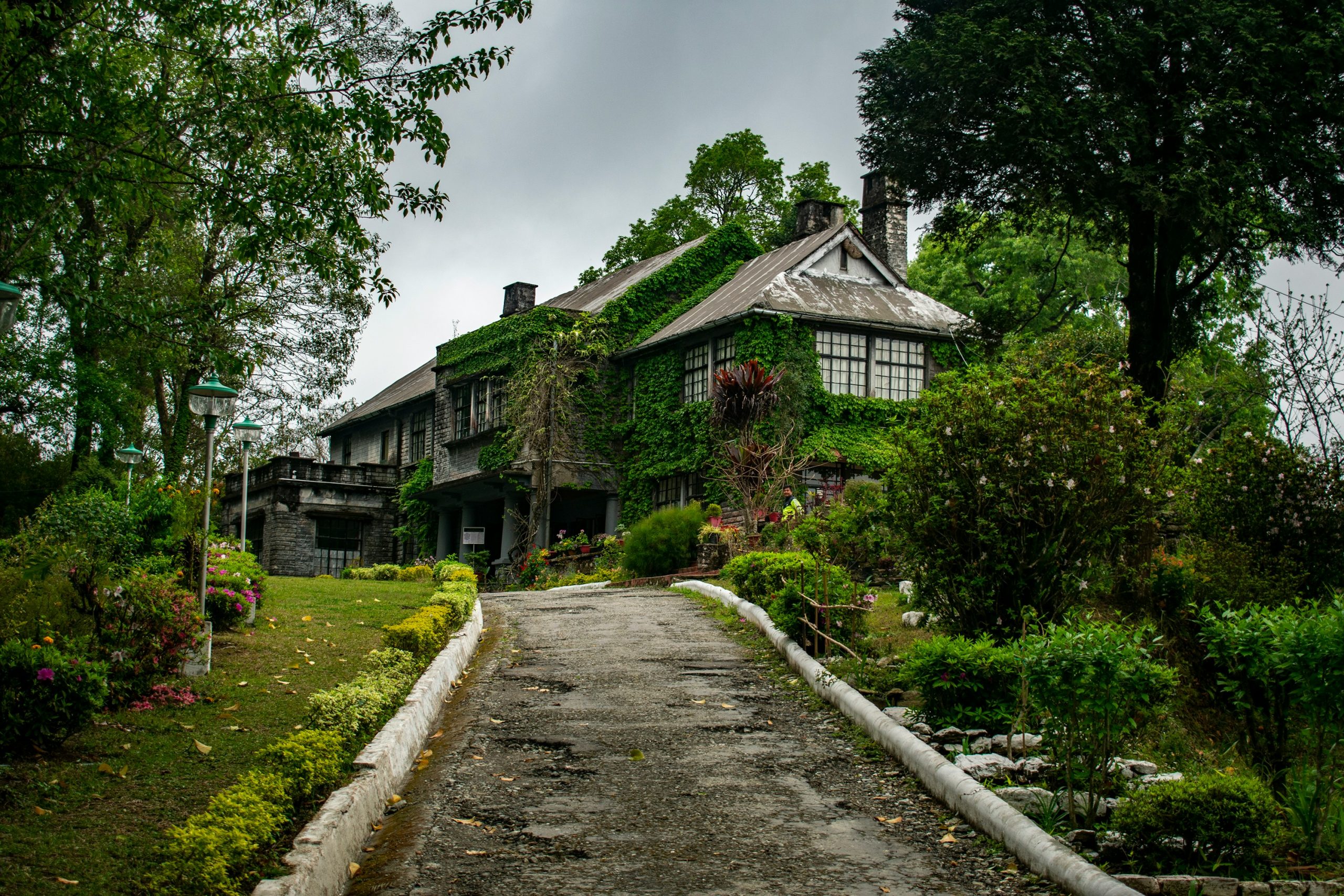Bishnupur
You’ve come to the correct spot if you’re searching for the ideal vacation filled with priceless memories. Today, make plans for a memorable and budget-friendly trip to Bishnupur.
About Bishnupur
Learn and explore more about Bishnupur before you set out on the best journey of your life with us.
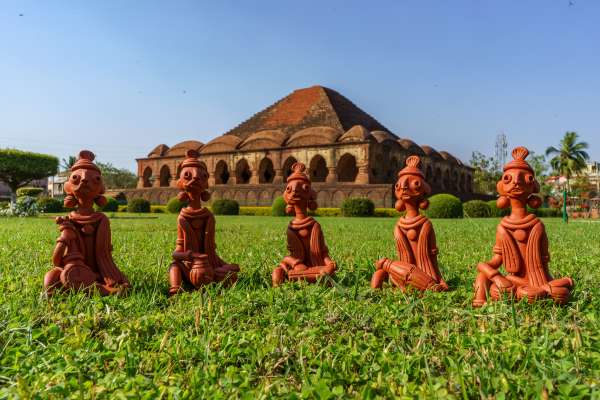
In addition, Bishnupur is well-known for its terracotta jewelry, ceramics, antiques, and traditional handloom sarees. It is also home to the School of Hindustani Music, which, along with the Bishnupur School of Painting, flourished under royal patronage. Local music academies continue to preserve this genre of music. The Malla dynasty was established by King Raghunath in 694 A.D., marking the beginning of Bishnupur’s history. It was not until 994 A.D., nevertheless, that the location was given the name Bishnupur. The Hindu god Vishnu is the source of the name Bishnupur. The annual Bishnupur Mela, a classical dance and music event organized by the city, is an experience not to be missed in addition to sightseeing and shopping.
Experience the Life of Bishnupur
About 132 kilometers from Kolkata, in the Bankura District of West Bengal, is the well-known municipality of Bishnupur. It is well-known for its Baluchari sarees and clay temples. The town is rich in architecture, music, and handicrafts, all of which are remnants of its magnificent history. It flourished under the authority of a line of Hindu Rajas from the Malla dynasty in the 17th and early 18th century. In addition to creating a distinctive style of architecture, Bishnupur is home to some of Eastern India's most exquisite and intricate terracotta constructions that have weathered the test of time. The Ramayana and Mahabharata tales are portrayed on the terracotta tiles. It is essential to see temples such as the Rasmancha, the Jorbangla twin shrines, and the Shyam Ray Temple.

How to Reach Bishnupur?
Learn and explore more about Bishnupur before you set out on the best journey of your life with us.
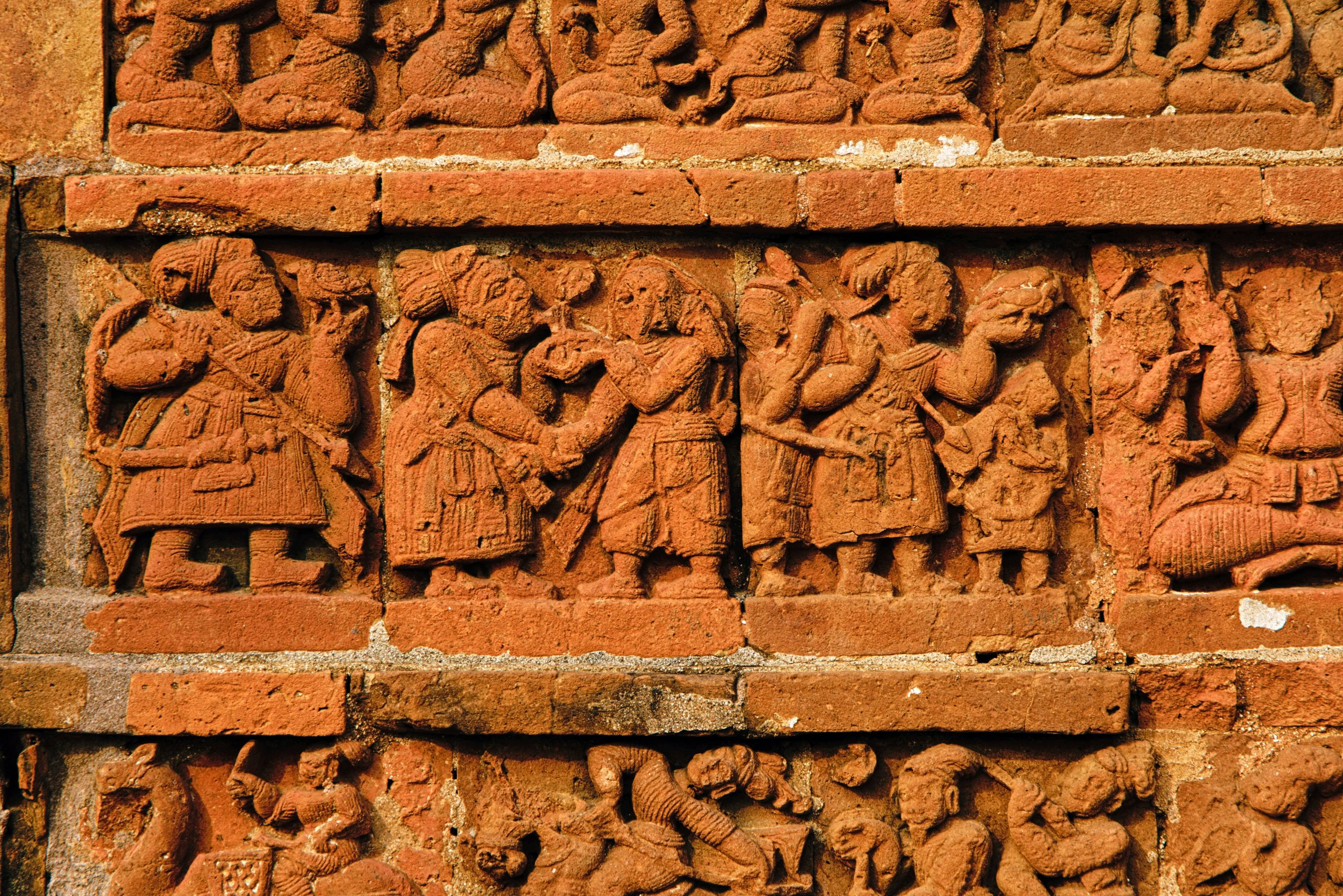
By Train: Regular trains departing from the Howrah railway station travel to Bishnupur.
By Road: There is excellent road connectivity between it and other towns like Asansol, Durgapur, Burdwan, Panagarh, and other regions of the state, as well as Kolkata.
By Air
Netaji Subhas Chandra Bose International Airport in Kolkata is the closest airport near Bishnupur. It has excellent rail and road connections to Kolkata.
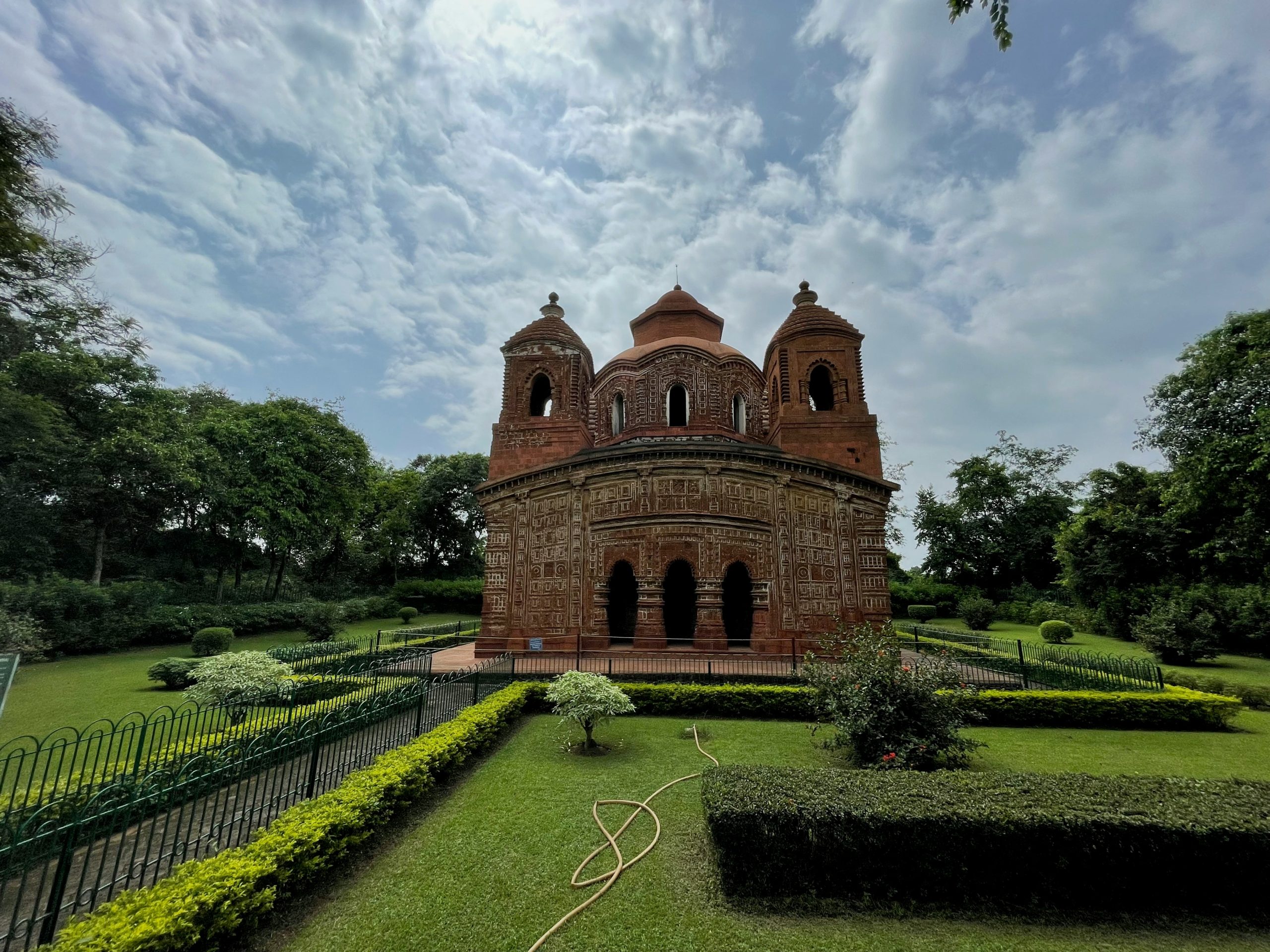
Attraction & Activities of Bishnupur
Learn and explore more about Bishnupur before you set out on the best journey of your life with us.

Radhya Shyam Temple
This Ekaratna temple built of carved stones is situated next to the well-known Mrinmayee Mata Temple in Bishnupur. It has a single tower with a fluted dome on top and a square, curved roof. The King Chaitanya Singha built the Radha Shyam Temple at Bishnupur, which dates back to 1758. This south-facing terracotta temple is situated in a spacious courtyard that is bounded by a tall wall. The temple has been enhanced by the low relief carvings on its outside walls, which are adorned with exquisite stucco embellishments. The sanctuary of this live shrine has the figures of Lord Krishna and Radha. The Archaeological Survey of India (ASI) has kept the temple in good condition due to its historical significance and heritage value.
Shyam Rai Temple
Located north of Bishnupur hamlet, the Shyamarai Temple, also known as Pancharatna Temple, is renowned for its exquisite architectural design. Built by Malla King Raghunath Singha in AD 1643, this Pancharatna brick temple is distinguished by its intricate terracotta decorating and stands on a low square pedestal. Beautiful terracotta tiles adorn the temple's façade and interior, which is designed like a square. The story of Lord Krishna and the Gopis are portrayed in a variety of images and sculptures on the walls of the temple. In addition, it has bizarre creatures, plants, animals, and scenes from the Mahabharata, Ramayana, and other Puranic tales.

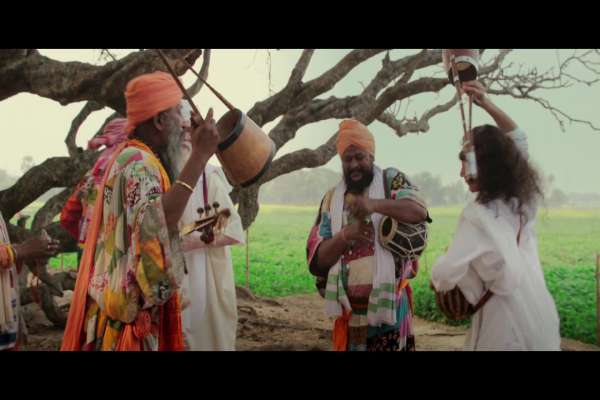
Jhumur Song
The Jhumur folk song is an age-old musical genre indigenous to Purulia, Bankura, Bardhaman, and Birbhum, the red-soiled areas on West Bengal's western edge. Local artisan communities and tribal groups including the Santhal, Munda, Oraon, Kharia, and Birharh tribes are fond of jhumur tunes and dances. Because Jhumur uses archaic language, his writing is renowned for its literary relevance and lyrical quality. Depending on the season, different Jhumur songs are performed throughout the year. For instance, the songs Chaitali and Bhaduria are performed during the springtime months of Chaitra and Bhadra, respectively.
Baul & Fakirs
Bengali mystics and roaming minstrels, known as Baul and Fakirs, are recognized for using their evocative and mysterious songs to convey their spiritual ideas. The historic hubs of Baul Fakir culture are the districts of Murshidabad, Nadia, Bankura, Bardhaman, and Birbhum. The "ektara" is a musical instrument that is used to accompany their singing. Sufi and Vaishnav philosophy largely combines their respective worldviews. This Baul song has gained widespread popularity and acclaim on a national level.
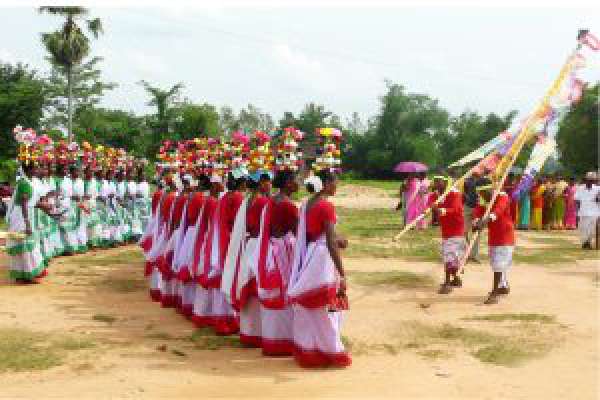
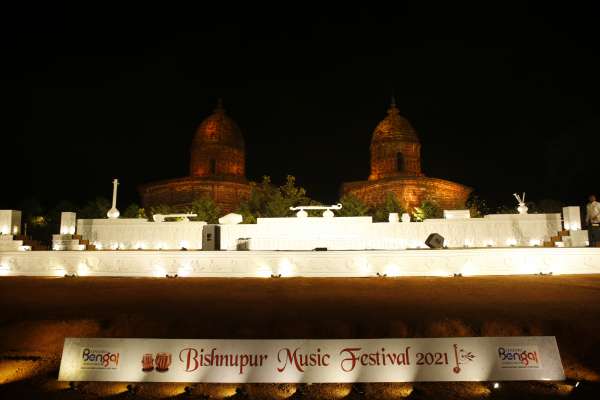
Dokra Metal Casting
This unique art technique, known as "Dokra Metal Casting," was done by the Bishnupur tribal tribe known as "Dokra Damar." This crafting method uses clay as its primary material, which is then covered in a wax covering. The sculptures are coated with clay paste once the wax has been applied. This method has been used to create a variety of items, including bells, flatware, jewelry, and religious symbols. Wearing dokra jewelry is a popular choice among ladies, and it has become a living heritage of Bishnupur.
Songs From Bishnupuri Gharana
During the latter half of the 18th century, when other musical Gharanas gained popularity, the Bishnupuri musicians flourished in the "Dhrupad" style. Bishnupuri Gharana was greatly influenced by the Seni Gharan. Tansen's descendent, the renowned Dhrupad Singer Bahadur Khan, arrived in Bishnupur and popularized his Gharana. West Bengal's illustrious history, the Bishnupuri Gharana, is still represented by a few well-known vocalists. One should not miss the annual Bishnupur Mela, a celebration of classical dance and music organized by the city.
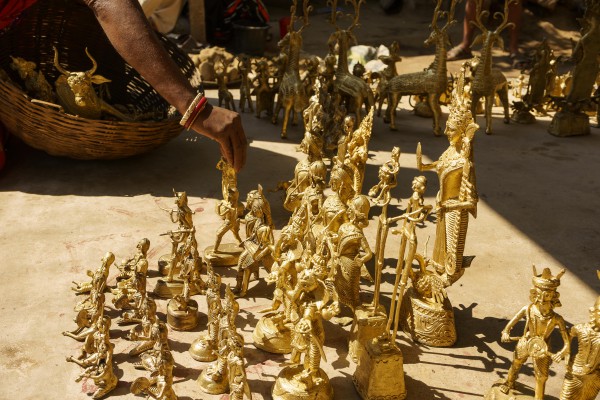
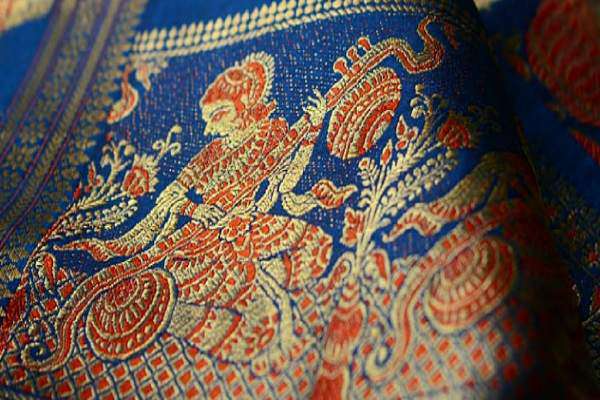
Terracota Work
Bengali architects used the burned clay bricks to build a brand-new craft known as "Terracota." The height of terracotta art was achieved in the seventeenth century. Numerous terracotta and stone temples were constructed by Raja Jagat Malla and his heirs. Several temples in Bishnupur, including Rasmancha, Jor Bangla, Shyam Rai, and Madan Mohan, provide visitors the opportunity to witness the exquisite craftsmanship of terracotta. The terracotta sculptures tell many tales from Indian mythology and history. The clay artwork found in the temples portrays stories from Vishnupurana, the life and adventures of Krishna, and scenes from the Ramayana and Mahabharata. Terracotta is used to make a wide variety of pottery, not just for temples. In order to give terracotta pottery the correct form, finely refined clay is typically used in the production process.
Baluchari Sari
Additionally well-known for its Baluchari silk sarees is Bishnupur. These are unique varieties of silk sarees with exquisite pallu and border weaving. These sarees depict mythical tales from the Ramayana and Mahabharata, skillfully woven by the artisans. These sarees, which are often colorful, have a glossy, natural sheen. These sarees are crafted from genuine, pure silk.
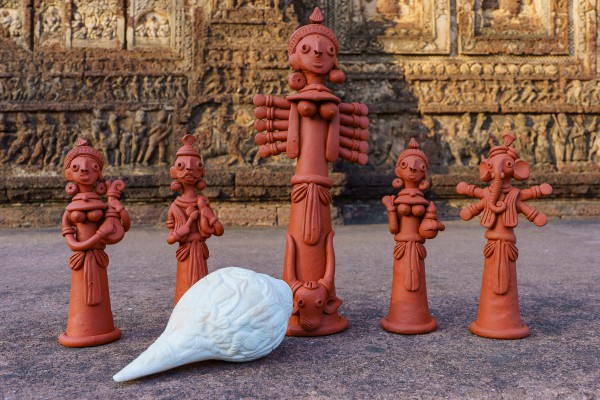
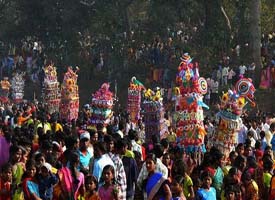
Acharya Jogesh Chandra Purakriti Bhawan
An art and archaeology museum may be found in Bishnupur at the Acharya Jogesh Chandra Purakriti Bhawan. Mesolithic and Paleolithic implements, metal jewelry, clay sculptures, and other artifacts may be found in the archeological exhibition. Coins and antiquities from Bishnupur's ancient past, spanning from the Gupta monarchs to the Pal dynasty, are housed at this museum.
Bishnupur Mela
Every year, during the final week of December, the Bishnupur Mela is held close to the Madanmohan Temple. People from all the surrounding villages gather together for this four-day fair, which marks the conclusion of the agricultural season. The fair's booths include regional artwork and handicrafts. Additional vendors selling candy, clothing, conch shells, cookware, and other goods may be found. The Bishnupur Utsav, which is celebrated just after the Mela, is a more recent addition. This event honors the musical "Bishnupur Gharana" with classical music and dance.
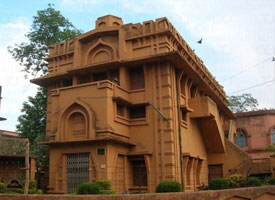
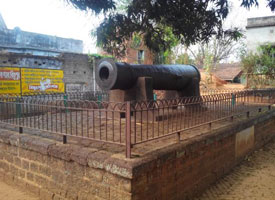
Jorebangla Temple
The Jorebangla Temple, located near Bishnupur, is an old temple with stunning architecture. Raghunath Singh, the Malla King, constructed this brick temple in 1655. The Jorebangla Temple has the appearance of two thatched cottages attached to one another and supported by a single tower. Using laterite bricks, the building was built on a platform that was one meter high. Terracotta sculptures and carvings depicting animals, flowers, geometric patterns, gods and goddesses, and different facets of human existence and civilization cover the whole outside wall. Scenes from the Ramayana, Mahabharata, and other important, holy Hindu texts are carved onto the walls.
Dal Madol
The Malla monarchs constructed the Dal Madol cannon in order to repel the Maratha invasion. This cannon, which is important to the people of Bengal and Bishnupur, is located next to the Chinomasta shrine. The cannon is approximately 3.8 meters long with a 28.5-centimeter barrel. Under Raja Gopal Singh, it was constructed in 1742 to defend Bishnupur against the Marathas. The fact that this cannon is entirely composed of iron and hasn't rusted despite being left outside in the elements and exposed to the elements since its creation is among its most amazing features.
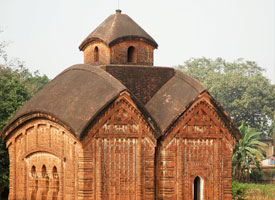
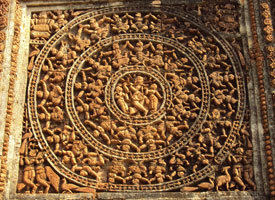
Rasmancha
In the West Bengali district of Bishnupur, the Rasmancha is a historically significant temple. In 1600 AD, Hambir Malla Dev, the ruler of Mallabhum, ordered it. During the Rash festival, the idols of Lord Krishna from various temples were housed at the Rasmancha pavilion. The yearly celebration continued until 1932. This is Bishnupur's oldest brick temple, with turrets resembling huts encircling an extended pyramidal tower. The roofs of Bengal hut-style buildings gracefully encircle the outermost gallery. Bricks are used to pave the floor. All of the building is elevated on a laterite block platform. The temples and ornamental figures were built with bricks and terracotta plaques created from clay that was obtained locally. The property's upkeep and preservation are under the responsibility of the Archeology of Survey of India.
Bishnupur Arts
Terracotta artwork is Bishnupur's most well-known artistic medium. In addition to its temples, Bishnupur is well-known for its terracotta jewelry, antiquities, and ceramics. The artisans here make the Baluchari Saris, one of the most beautiful saris in all of India. After being individually colored, the silk strands are threaded through a loom. Bishnupur is also well-known for its "Dokra," or metal craft.
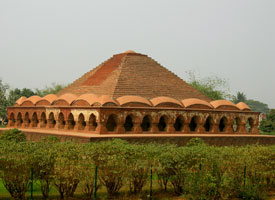
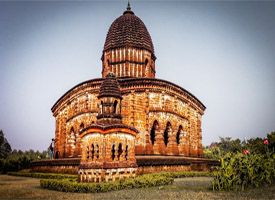
Kalachand Temple
The oldest Eka-ratna temple in Bishnupur is Kalachand Temple, constructed in 1656 AD by Malla monarch Raghunath Singha. The laterite temple has a floor area of approximately 11.1 square meters and a height of 9.2 meters. The building's layout is square, and its single tower is perched on a curved rooftop. The magnificent terracotta sculptures, which feature the amazing Bengali chala architectural style, are located on the temple's rooftop. The sanctuary features an unusual pyramid structure that is protracted and has turrets fashioned like cabins around it.
Radha Govinda Temple
This terracotta Ekaratna temple was constructed in 1729 AD, under Krishna Singha's reign, as shown by the dedication inscription on the temple's southern front. This temple is close to the Radha Madhav and Nandalal temples, and it is situated behind the Jor Mandir collection of temples. When visiting the well-known "Pora Matir Hat," a weekly rural marketplace where burned clay goods are sold, one might stop by these complex of temples. The temple features a square floor layout, a curving roof, and a Sikhara at the top. Few bas-relief sculptures remain, which were formerly done with exquisite stucco work. There is a little brick-chariot that resembles a little temple next to this one.
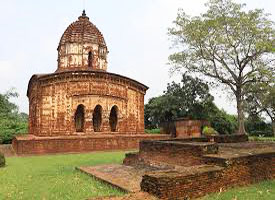
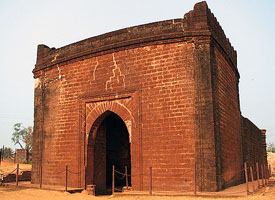
Bishnupur Music Festival
Following the Dhrupad lineage, the Bishnupur Gharana of Hindustani classical music emerged in the 13th century as the only specialized style of Indian classical music from Bengal. The West Bengal Tourism Department's innovative Bishnupur Music Festival honours the tradition's founders and preserves its rich cultural heritage. At the Bishnupur Music Festival in February each year, the West Bengal government, the Department of Tourism, and the Musicians of Bengal take pride in showcasing the history and culture of one of the most active gharanas in the nation.
Garh Darwaja
The terracotta gateway known as Garh Darwaja is located in Bishnupur, a place well-known for its terracotta constructions constructed during the Malla Kings' reign. The 'Chota Patthar Darwaja' or 'Small doorway' of Bishnupur is another name for this doorway. The arched terracotta edifice known as Garh Darwaja has a simple facade. A little distance away from this entrance is another, bigger doorway called the 'Main entrance' or 'Bara Patthar Darwaja' of Bishnupur.


Madanmohan Temple
Malla King Durjana Singh Deva built the terracotta temple of Madan Mohan in 1694 AD for the goddess Radha and the god Krishna of his dynasty. The temple's architecture, which is in the Ekaratna style, has a pinnacle above the square, flat roof with curving cornices. One of the most well-known temples in the community, the Eka-Ratna temple is comparatively larger than other comparable temples in Bishnupur. One of Bishnupur's oldest temples where the god is still revered is Madanmohan Temple. The temple is primarily constructed on a laterite block platform using clay bricks. This temple's exquisite terracotta walls are adorned with sculptures, reliefs, and carvings that tell the myths of Krishna Leela and the Ramayana.
Mukutmanipur
Mukutmanipur, where the rivers Kumari and Kansabati converge, is home to tribes including the Munda, Bhumij (Sardar), and Santhal, who are known for their exquisite cuisine, music, and dancing styles. Mukutmanipur also includes woods, hillocks, and the second-largest earth dam in India, the Kangsabati Dam and Water Reservoir. It is a bustling tourist attraction that offers a peaceful, unusual, and relaxing natural setting in addition to showcasing rich traditional tribal customs and festivals. It's the best destination for weekend trips since it perfectly combines culture and nature. Urbanites seeking respite and solace travel to Mukutmanipur, far from the bustling metropolis, to revitalize themselves.


Lalji Temple
Bir Singha, the Malla ruler, constructed the Lalji Temple with Shikhara. It is constructed on a square-shaped elevated platform. This temple honors Radha-Krishna and features beautiful stucco embellishments that are reminiscent of Bengali architecture. There is a dance hall in front of the temple and a Raghunath-dedicated tower to the west. A wall divides the outer yard from the inner yard, which is home to a modest Pancharatna temple dedicated to Kameswar Siva. The temple has a gate leading to the east and is completely surrounded by walls. There are two automobiles at Gateway Front; one is for Lord Lalji and the other for Lord Raghunath. They are paraded during the Dussera celebration. The temples feature Bengali inscriptions in a number of locations.
Susunia Hill
Susunia is a 1500-foot-tall hill in West Bengal's northwest corner of the Bankura District. On this hill, according to legend, Raja Chandra Varma first erected his fort. With its abundance of natural beauty, including the Gandheshwari River running down the hill, lush vegetation, and cascading waterfalls, this location is perfect for nature enthusiasts. Mountaineering and rock climbing are some well-known hobbies in this area. The hill is well-liked because of its significant archaeological worth. From this region, fossils of lions, giraffes, hyenas, and several other animal species have been found. This is the site of West Bengal's earliest rock inscription.
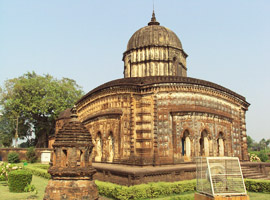

This dancing style captures the splendor of West Bengali folklore. This ancient dancing style has been accompanied by a variety of musical instruments, including the madol, flute, dhamsa, jhanj, and kartal.
Santhali Dance
One of the most well-known traditional dances in West Bengal is the sanghali dance. The Santhali community has a dance for practically every occasion, and the majority of their dances are centered around their religious festivities. They have two dances: the "Dasai" dance, which is done before Durga puja, and the "Sohrai" harvest dance.

Where to Stay in Bishnupur?
Learn and explore more about Bishnupur before you set out on the best journey of your life with us.
Plan an Unforgettable Experience in Bishnupur Today!
We can help you fit your vacation and experience within your allotted budget.
Book Your Trip Now
- +1-123 456 7890
